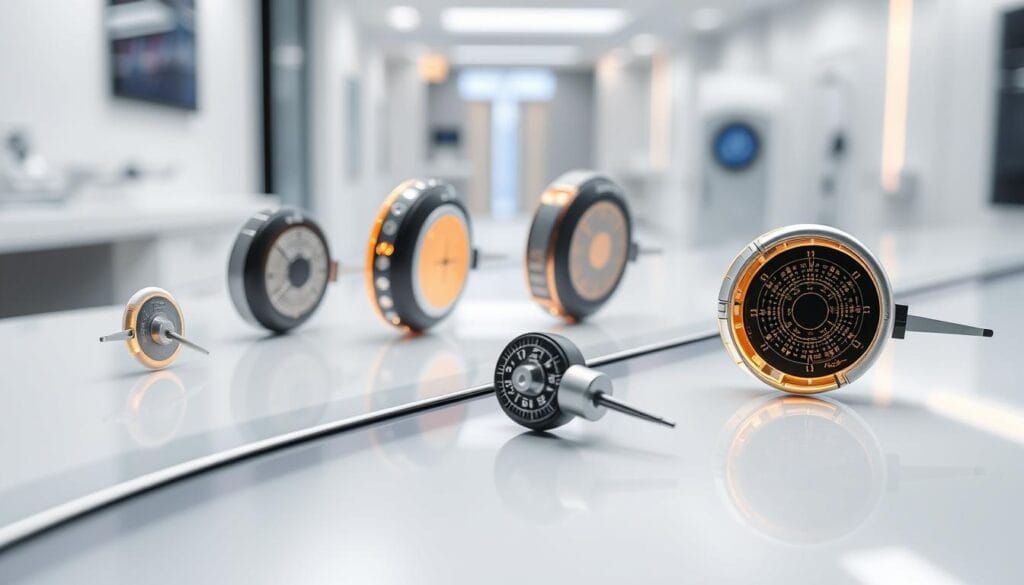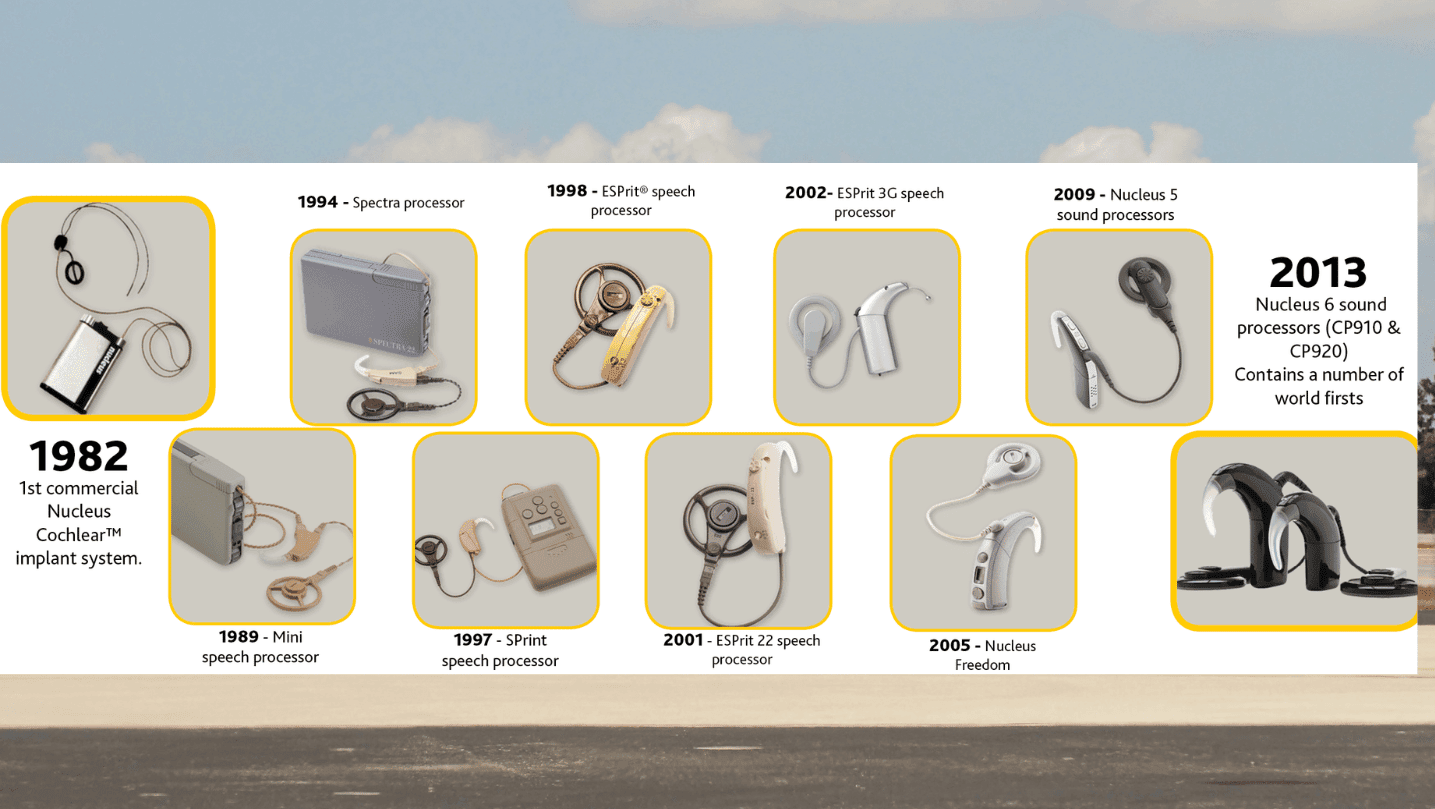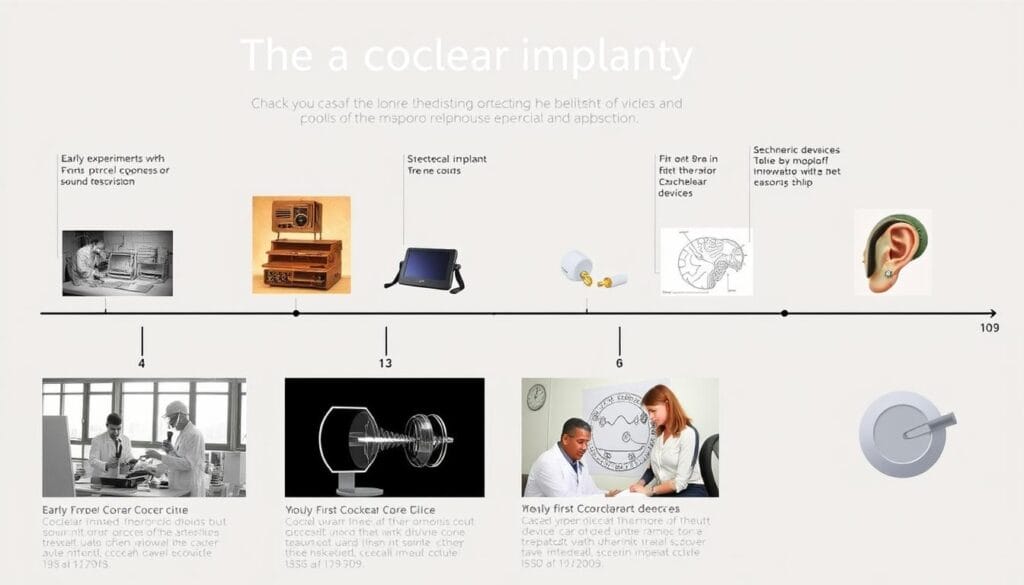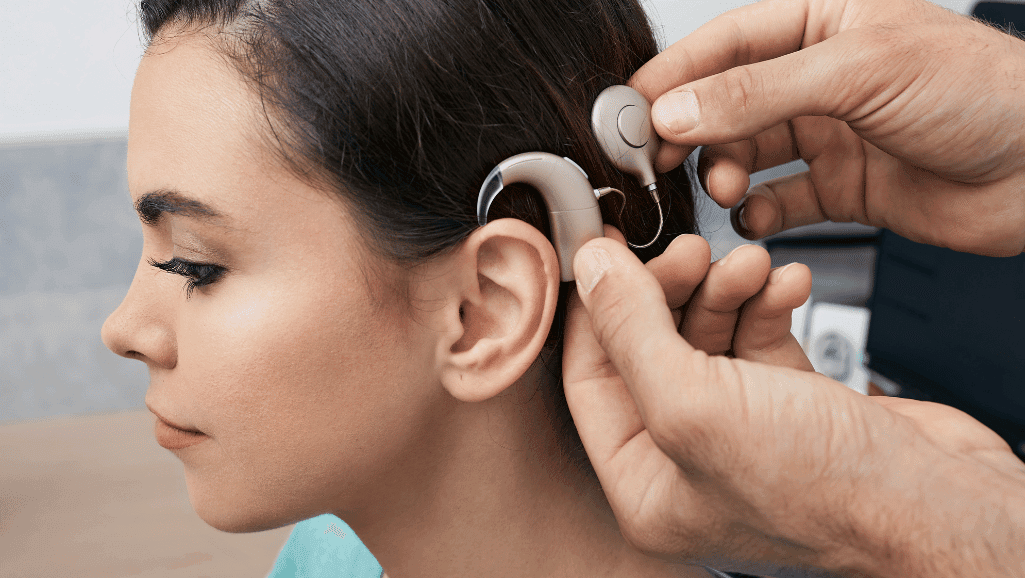The cochlear implant is a big step forward in hearing health. It moves beyond old hearing aids to offer hope for those with severe hearing loss. The cochlear implant invention date goes back to early studies on how electricity affects hearing.
This journey is filled with important moments. From Alessandro Volta’s work in the 1800s to the 1950s, we see how technology and science came together. These steps led to the advanced ear implants we have today.
The story of the ear implant invention date is one of progress. It shows how people have worked to overcome hearing challenges. This journey is about making a world where everyone can communicate freely, without hearing barriers.
Key Takeaways
- The cochlear implant invention date starts with Alessandro Volta’s groundbreaking work on electrical currents and hearing.
- Over the years, small steps have added up to create the auditory implant creation we see today.
- From simple to complex devices, each step in the cochlear implant technology origin has made sound more accessible to us.
- The history of the ear implant invention date shows a never-ending quest for better technology and hearing solutions.
- Today, the work in this field is changing lives. It’s making a big difference in how people participate in society and feel empowered.
Unveiling the Inception: How the Cochlear Implant Came to Be
The story of cochlear implants is a journey of scientific wonder and major breakthroughs over centuries. This part looks at the key moments that shaped cochlear implant technology.
The Pioneering Discovery by Alessandro Volta
Alessandro Volta was a key figure in the early days of cochlear implants. In the 1800s, he tested electrical stimulation on his own ears. His findings, though basic, opened doors for future research.
Volta’s work showed that electrical impulses could create sounds. This discovery was a big step towards helping people with hearing loss. Learn more about Volta’s groundbreaking work here.
Djourno and Eyriès’ Unintended Breakthrough
In 1957, André Djourno and Charles Eyriès made a surprising discovery. They were trying to fix facial nerve issues but accidentally helped a deaf patient hear. This chance finding was a big step forward in understanding how to use electrical impulses for hearing.
William House and the Advent of Practical Cochlear Implants
William House and John Doyle made a big leap in 1961. They created a practical cochlear implant that could be inserted through the round window. By the early 70s, House’s work led to the 3M/House single-channel cochlear implant.
This invention was a major breakthrough. It showed that cochlear implants could be a real solution for hearing loss. House’s work made him a key figure in the field.
This look back at history shows the power of human curiosity and determination. Each pioneer added to a legacy of innovation. Their work brings hope and sound to those who would otherwise be silent.
As we celebrate these achievements, we also look forward to new advancements. These will help cochlear implants do even more for people with hearing loss.
When Was the Cochlear Implant Invented: Tracing Back to the First Spark
The search for the cochlear implant invention date takes us back over a century. It’s a key moment in medical tech for those with severe hearing loss. This story is not just about science but also about improving human senses.
Alessandro Volta started working on early versions in the 1800s. But the real breakthrough came in 1957. André Djourno and Charles Eyriès created the first devices that directly stimulated the auditory nerve. Yet, these were basic and not ready for use.
Dr. William House made big strides in the late 1960s. His work led to the first successful implant in 1972. This marked a new era in hearing science. You can learn more about Dr. House’s work and its impact through educational outlines.
Medical science was also advancing cochlear tech. In 1982, the first modern implants were introduced in Australia. By 2004, around 82,500 people worldwide had received cochlear implants.
| Year | Development | Impact |
|---|---|---|
| 1952 | First electronic hearing aid introduced | Groundwork for electronic auditory devices |
| 1982 | Introduction of modern cochlear implants in Australia | Significant improvement in design and functionality |
| 2004 | Approximately 82,500 people worldwide fitted with cochlear implants | Widespread adoption and recognition of cochlear implant efficacy |
| 2023 | Continued advancement in cochlear implant technology | Enhanced auditory resolution and user experience |
Medical treatments for hearing loss keep getting better. This shows the ongoing needs of those with hearing impairments. New audiology innovations are pushing what tech can do, as seen in recent studies.
As science moves forward, the story of the cochlear implant invention date shows more than just one moment. It’s a story of ongoing discoveries and improvements. These have greatly changed lives and what tech can do in medicine.
Decades of Development: Cochlear Implant Technology Over Time
The cochlear implant development timeline shows big cochlear implant progressions. These changes have helped many people worldwide. From the start, this technology has been key for those with severe hearing loss.
From Single Channel to Multichannel Systems
The move from single-channel to multichannel systems is a big step. This change has made understanding speech much better. People often see big improvements in just 3 to 6 months.
Since the first implant in 1969, there have been many breakthroughs. The first had only five electrodes.
The Transition to Behind-The-Ear Processors
The switch to behind-the-ear (BTE) processors was a big change. These devices look and work like regular hearing aids. They’ve made cochlear implants easier to use every day.
Modern-Day Cochlear Implant Features and Innovations
Today’s cochlear implant technology is very advanced. It has features like being waterproof and remote programming. These help users live well, despite their hearing loss.
As cochlear implant advancements continue, devices now fit different hearing levels. This shows how adaptable and personal today’s technology is.
These cochlear implant progressions show more than just tech growth. They also show a better understanding of hearing needs. For more on hearing aids, check out this comprehensive review.
| Year | Innovation | Location |
|---|---|---|
| 1957 | Initial cochlear implant (Djourno’s coils) | Paris |
| 1964 | Six-electrode system developed | Palo Alto, CA |
| 1970-71 | Two-electrode system implemented | San Francisco |
| 1984 | FDA approves first single-channel implant | Silver Spring, MD |
| 1987-2000 | Approval of multi-channel implants for different age groups | Silver Spring, MD |
The cochlear implant innovation world keeps growing. It shows years of research and use, greatly improving life for those with hearing loss.
Rise of the Cochlear Implant: Approval and Acceptance in Modern Medicine
The journey of cochlear implants from experimental to widely accepted devices shows great cochlear implant breakthroughs. These innovations and tests led to a big change in how they are seen in medicine. Now, they greatly help people with severe hearing loss.
Early work by Alessandro Volta in the 19th century showed the idea of using electricity to help hearing. Later, in the mid-20th century, André Djourno and Charles Eyriès made big steps. Their work shows how hard people have worked to get cochlear implants approved.
Today, advanced hearing aids like cochlear implants have new tech. They use digital signal processing and wireless tech. This makes hearing clearer and more natural.
| Year | Breakthrough | Impact |
|---|---|---|
| 1961 | First implantation by Drs. House and Doyle | Marked the pioneering phase of cochlear implants |
| 1978 | Introduction of multichannel CI by Clark | Enhanced speech perception and clarity |
| 2000s | Integration of DSP and Bluetooth technology | Improved sound quality and user experience |
| 2013 | Over 320,000 individuals using CIs | Widespread global acceptance and usage |
Today, cochlear implants are widely used and accepted. They have moved from being rare to a common solution for hearing loss. Even though there are some risks, most people trust and rely on them.
For kids, cochlear implants are especially important. They help kids learn to speak and listen early. This has helped many kids do well in school and have better futures.
The story of cochlear implants shows how medicine keeps getting better. It shows the hard work and care for safety that goes into new treatments. This hard work has made cochlear implants a big success in modern medicine.
Groundbreaking Cochlear Implant Models: The Evolution Continues

The journey of cochlear implant development has seen big cochlear implant breakthrough milestones. These milestones have changed lives for those with severe hearing loss. From the start to today’s advanced devices, each step has brought us closer to better hearing.
Cochlear Limited has been a key player in this journey. Their Cochlear Limited implant systems, like the Nucleus devices, have been game-changers. Each Nucleus model has improved sound processing and user experience, helping many people worldwide.
The Introduction of Nucleus Devices by Cochlear Limited
The Nucleus devices were among the first to offer multi-channel sound transmission. This made speech clearer and more natural. Cochlear Limited’s ongoing research has made them leaders in the field.
MedEl Corporation’s Contributions to Cochlear Implant Development
MedEl Corporation has also been a major player. Their first model, the Comfort CI, was followed by smaller, more efficient devices. These advancements have improved comfort and hearing outcomes for a wide range of patients.
Advancements from Advanced Bionics and Beyond
Advanced Bionics cochlear implants have also made significant strides. They’ve focused on improving sound strategies for complex listening situations. This has greatly impacted how users engage with their environment.
This ongoing progress in cochlear implant development is vital for the deaf community. It suggests a future where hearing loss is less of a barrier. For more on the technology behind cochlear implants, check out this scientific overview.
Looking ahead, the future of cochlear implant systems is bright. These advancements promise to unlock even more potential. They will continue to evolve, supporting those who depend on them for communication and connection.
Conclusion
The story of cochlear implant technology starts with Alessandro Volta’s early experiments. It has grown into today’s advanced devices. This journey shows how far we’ve come in helping those with hearing loss.
From the first implants in the 1960s to the wearable devices of the 1980s, it’s been a big leap. By 2010, over 219,000 people had been helped. This shows how cochlear implants have changed lives for the better.
Each update, like more channels and better sound processing, has made implants more effective. They’ve become a key part of helping people hear again. Especially for kids, implants have opened doors to better language skills and education.
The work of surgeons, engineers, and researchers keeps pushing the limits of what’s possible. This ongoing effort promises even more improvements in the future. It’s a bright future for those who need help hearing.









